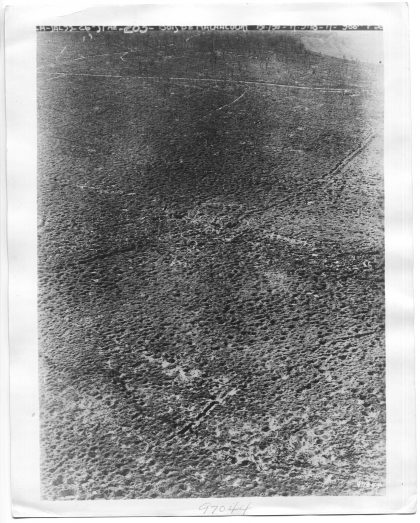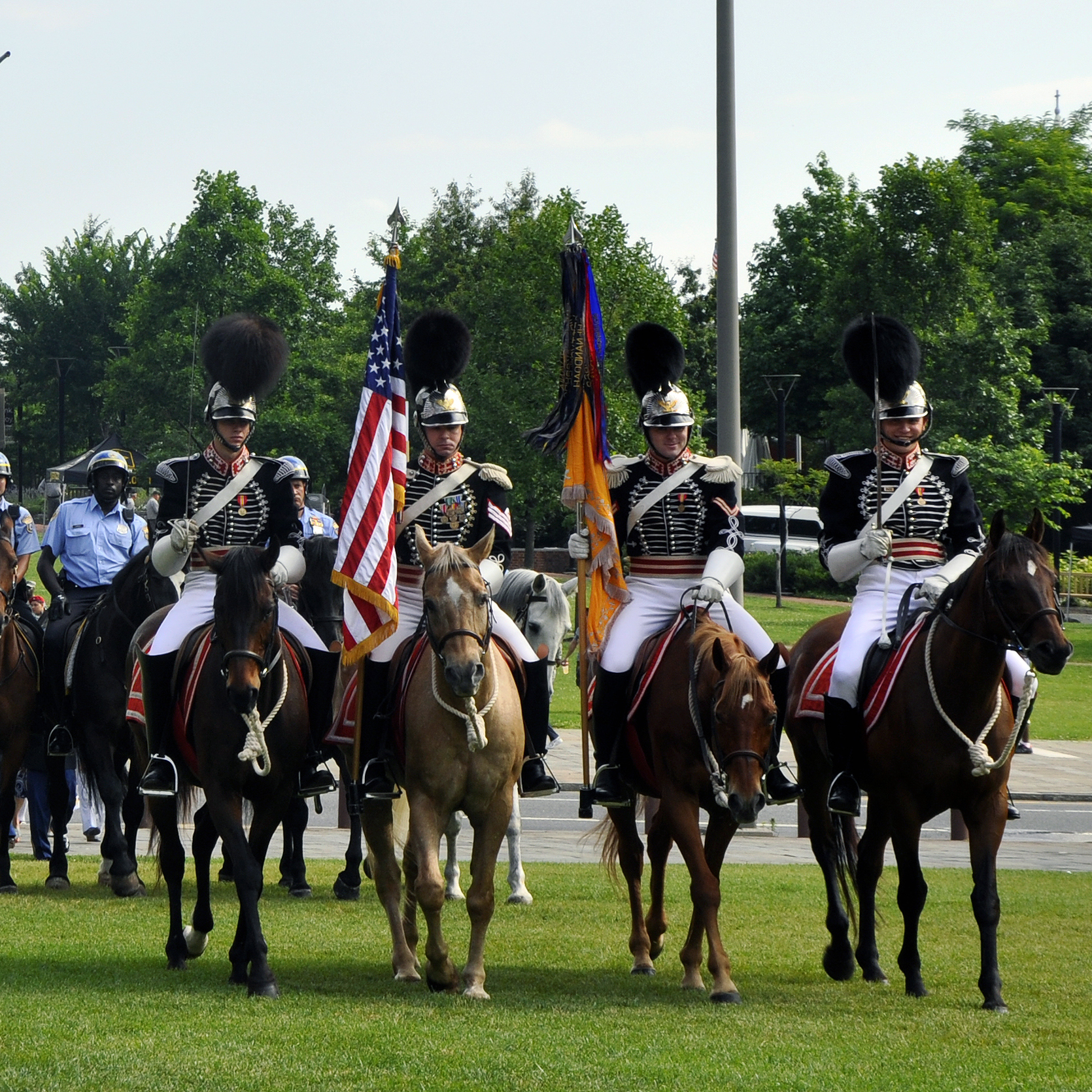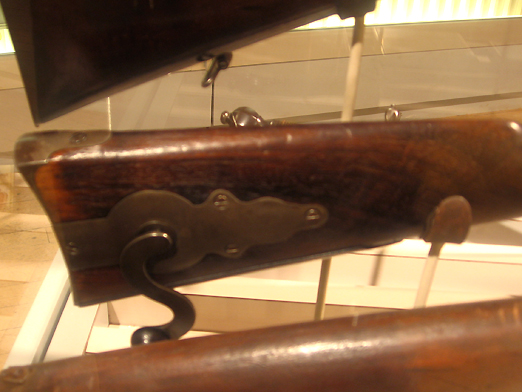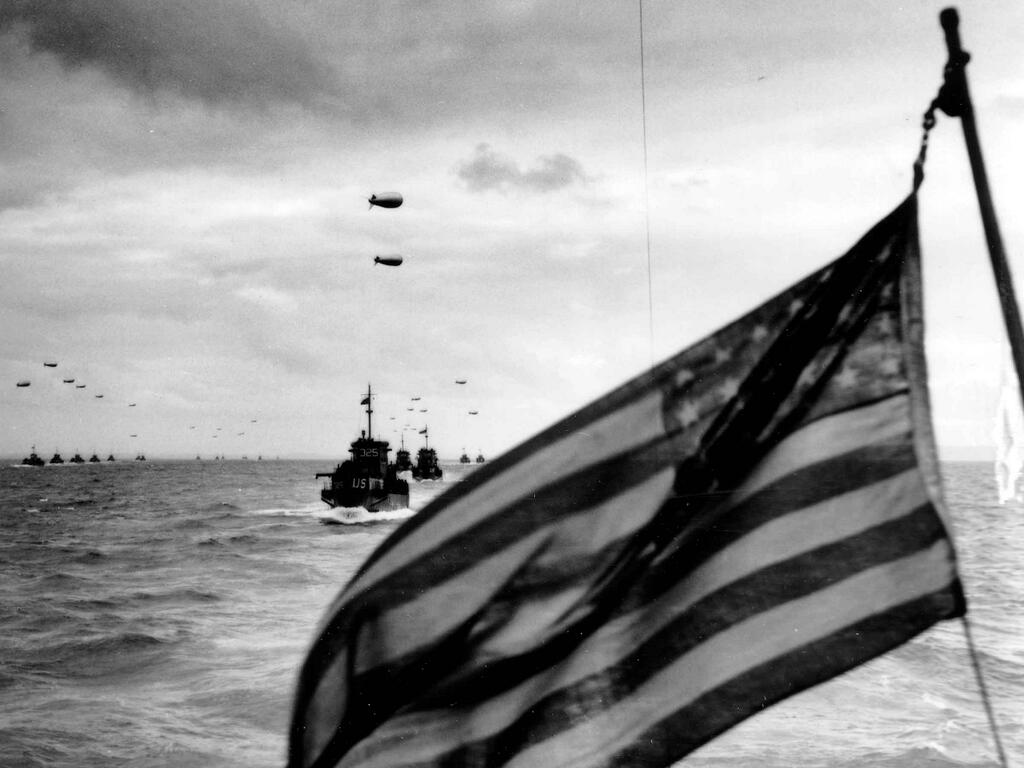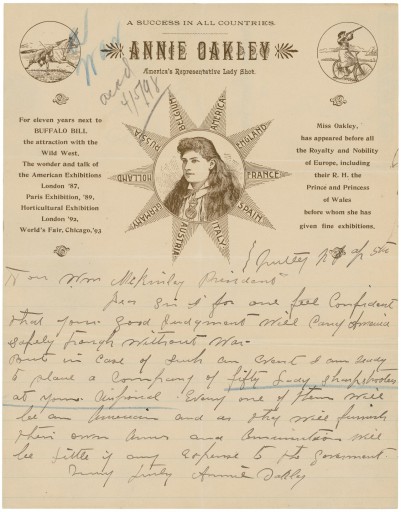I’ve spent a few days cleaning up photos and document scans from our recent trip to the National Archives at College Park. We only had about a day and a half there, but enough time to do several pulls of both pictures and documents related to Sebastian’s great grandfather’s service in World War I, as well as that of his two brothers.
Now I was well aware before we went that the records in College Park are unit records, not individual records. I’ve heard from genealogists who recommend not researching there because they are bigger, broad records rather than individual records. But I don’t agree with that view of researching. Because you know what I found there? Hand-drawn maps from the fields of the Meuse-Argonne Offensive showing his great grandfather’s company location shortly before the time he suffered his “severe leg wound.” One of those maps had a large splatter, and it wasn’t mud or coffee. It was a humbling moment where you say a quick prayer that the person next to the map’s custodian didn’t suffer or, miraculously, survived and came home to a happier life.
I found promotion documents for his great grand uncle that explained why he was promoted (the previous Sgt was killed in the last battle), and the documents that showed he likely would have been promoted again if not for being gassed and landed in the hospital for a while. These records include the list of every place companies were transported or marched from their arrival in France to the day they left. No, these aren’t records that promise to have a relative’s name on every page, in every folder, or even in every box. But they are the bigger picture documents that put the experiences of our relatives in context. Without that context, we don’t really have much of a story.
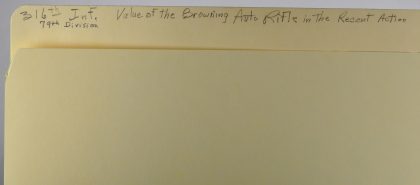
But, such research can also lead to unexpected finds. Because when I find out that the 316th Infantry put out a memo asking for feedback from the field on the BAR, you know I’m going to snap photos of every document in that folder (with approval from an archivist, of course). (Links below go to the original documents.)
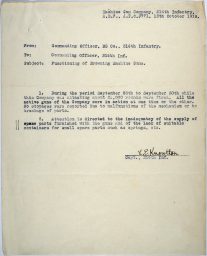 Let’s start with the Machine Gun Company’s take since they appear to have tested them first based on the dates of the memos and action reported:
Let’s start with the Machine Gun Company’s take since they appear to have tested them first based on the dates of the memos and action reported:
1. During the period September 26th to September 30th while this Company was attacking about 25,000 were fired. All the active guns of the Company were in action at one time or the other. No stopages were reported due to malfunctions of the mechanism or to breakage of parts.
2. Attention is directed to the inadequatcy of the supply of spare parts furnished with the guns and of the lack of suitable containers for small spare parts such as springs, etc.
There was nothing from Company A, so it was either lost or never filed.
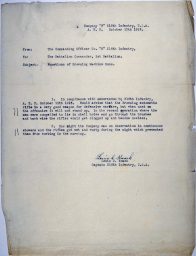 Company B did pipe up:
Company B did pipe up:
1. In compliance with memorandum Hq 316th Infantry, A.E.F. October 11th 1918. Would advise that the Browning automatic rifle is a very good weapon for defensive warfare, but when used on the offensive it will not stand up. In the recent operation where the men were compelled to lie in shell holes and go through the brushes and barb wire the rifles would get clogged up and become useless.
2. One night the Company was on observation in continuous showers and the rifles got wet and rusty during the night which prevented them from working in the morning.
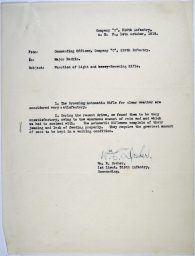 Company C filed a similar report as the previous company:
Company C filed a similar report as the previous company:
1. The Browning Automatic Rifle for clear weather are considered very satisfactory.
2. During the recent drive, we found them to be very unsatisfactory, owing to the enormous amount of rain and much which we had to content with. The Automatic Riflemen complain of their jamming and lack of feeding properly. They require the greatest amount of care to be kept in a working condition.
Company D was also silent, or their records were lost.
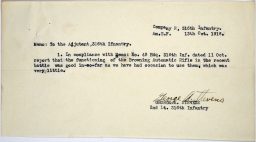 But for the next few companies, they didn’t find their reports were even worth full sheets of paper. Company E had the following report:
But for the next few companies, they didn’t find their reports were even worth full sheets of paper. Company E had the following report:
1. In compliance with Memo: No. 48 Hdq. 316th Inf. dated 11 Oct. report that the functioning of the Browning Automatic Rifle in the recent battle was good in-so-far as we have had occasion to use them, which was very little.
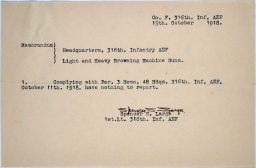 Company F, well, I have questions.
Company F, well, I have questions.
1. Complying with Par. 3 Memo 48. Hdqs. 316th. Inf, AEF, October 11th. 1918, have nothing to report.
First, there are so many questions about the structure of this memo. The strange and inconsistent use of punctuation and abbreviations. Is this passive aggressiveness for not wanting to file reports when you could be fighting? Is paperwork a pain? Are you pissed or happy you may have missed out on some fighting? Questions, I have them. Unfortunately, I was scanning for Company M, not F, but now I want to know more about the abruptness of 1st Lt. Large. Nothing to report? I get no details, but absolutely nothing?
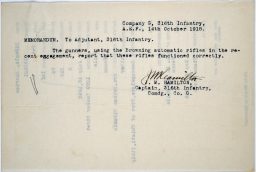 Company G, while slightly more cooperative than Company F, still files an interesting report, but not for the report content. Rather for the document on the back of the report. It seems they just grabbed a random Private’s file and typed it up. At first I worried that it was because the file was no longer of use, but it turns out that Pvt. Americo DiPaolo did survive the war and came back to his new homeland in the US to continue his work as a stone mason. He passed away in 1963 and is buried in Arlington National Cemetery.
Company G, while slightly more cooperative than Company F, still files an interesting report, but not for the report content. Rather for the document on the back of the report. It seems they just grabbed a random Private’s file and typed it up. At first I worried that it was because the file was no longer of use, but it turns out that Pvt. Americo DiPaolo did survive the war and came back to his new homeland in the US to continue his work as a stone mason. He passed away in 1963 and is buried in Arlington National Cemetery.
The gunners, using the Browning automatic rifles in the recent engagement, report that these rifles functioned correctly.
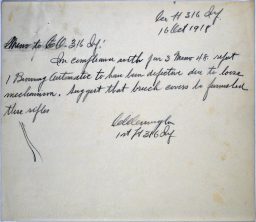 Company H, well, they were less than pleased with the gun and couldn’t be bothered to find a typewriter. Or maybe their typewriter was shot while they were trying to fix their BAR.
Company H, well, they were less than pleased with the gun and couldn’t be bothered to find a typewriter. Or maybe their typewriter was shot while they were trying to fix their BAR.
In compliance with par 3 Memo 48. report 1 Browning Automatic to have been defective due to loose mechanism. Suggest that breech covers be furnished these rifles
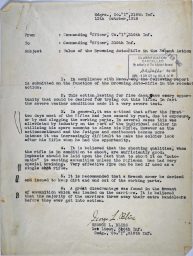 Perhaps the detail behind 1st Lt. George Bliss’s response on behalf of Company I may be why he was continually promoted and ended up retiring from the New York National Guard after serving in WWII and even into the Vietnam era.
Perhaps the detail behind 1st Lt. George Bliss’s response on behalf of Company I may be why he was continually promoted and ended up retiring from the New York National Guard after serving in WWII and even into the Vietnam era.
1. In compliance with Memo. 48, the following report is submitted on the function of the Browning Auto-Rifle in the recent action.
2. This action, lasting for five days, gave every opportunity that could be desired for trying out this Rifle. In fact the severe weather conditions made it a very severe test.
3. In general, it was noticed that after the first two days most of the Rifles had jams caused by rust, due to exposure, or by mud clogging the working parts. In several cases this was alleviated by industry on the part of the individual soldier in utilizing his spare moments to clean his Rifle. However as the actioncontinued and the fatigue and excitement became more intense it was increasingly difficult to make the soldier look after his Rifle when he had the opportunity.
4. It is believed that the shooting qualities, when the rifle is in condition to shoot, are sufficiently good. Emphasis should be laid upon the fact that to shoot it on “Automatic” is wasting ammunition unless the rifleman has had very special training. Very effective fire can be had if used as a single shot rifle.
5. It is recommended that a Breech cover be devised and issued to keep dirt and mud out of the working parts.
6. A great disadvantage was found in the amount of ammunition which was loaded on the carriers. It is believed that the majority of the carriers threw away their extra bandoleers before they ever got into action.
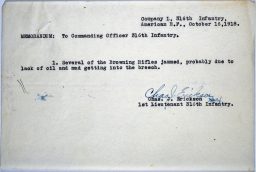 Company L gets back to short and sweet reports.
Company L gets back to short and sweet reports.
1. Several of the Browning Rifles jammed, probably due to lack of oil and mud getting into the breech.
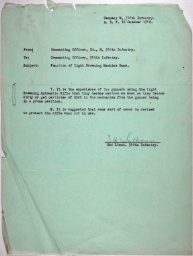 Again, more company reports are missing or were never filed, so we jump to Sebastian’s great grandfather’s group, Company M. This is where more documentation would be awesome. Did his great grandfather get one to test? If only we had a time machine and could go back and ask. His great grandfather was still in the fight at this date. He would only obtain his severe leg wound a few days before the armistice.
Again, more company reports are missing or were never filed, so we jump to Sebastian’s great grandfather’s group, Company M. This is where more documentation would be awesome. Did his great grandfather get one to test? If only we had a time machine and could go back and ask. His great grandfather was still in the fight at this date. He would only obtain his severe leg wound a few days before the armistice.
1. It is the experience of the gunners using the light Browning Automatic Rifle that they become useless as soon as they become dirty or get particles of dirt in the mechanism from the gunner being in a prone position.
2. It is suggested that some sort of cover be devised to protect the rifle when not in use.
I hope you readers enjoyed a least a little insight into 99-year old records with firsthand accounts of newly issued firearms. I know I enjoyed going through every one of these documents, even when I was having moments of repeating “please don’t tear, please don’t rip!” while separating folded up pieces of onion skin paper.

